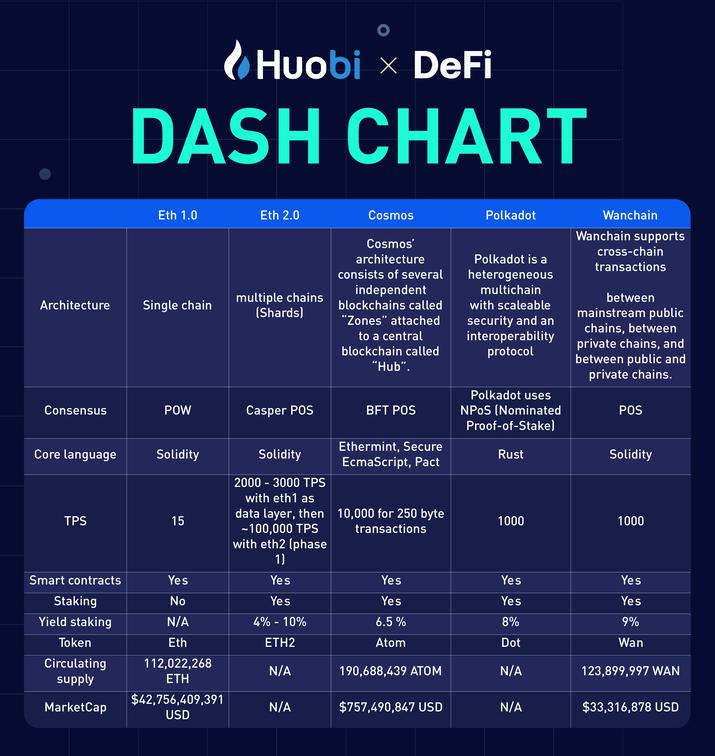After the launch of Bitcoin in 2009, developers from all over the world started getting interested in cryptocurrency and blockchain technology. For years, they were trying to make new projects on their own blockchains, sometimes as a fork of Bitcoin’s own chain, and sometimes building the new chain from scratch.
However, since these were literally the earliest days of crypto and blockchain, most of those chains were very similar to the original one. Some were a bit faster than Bitcoin’s, or more scalable, but in the end, the differences were minimal. This changed in 2015 with the launch of Ethereum, which revolutionized the blockchain sector by pointing out its other use cases, such as the ability to store code.
This led to the creation of smart contracts, and through them, to the creation of numerous new blockchain products, countless projects, and a new era of unique use cases and experimentation with this technology, whose potential suddenly seemed limitless.
Over time, Ethereum’s own network started seeing issues, particularly when it comes to scalability and processing speed, with countless projects and trends launching on top of it, and little to no improvements in its performance. The end result was a rise in fees, as everyone wanted their transaction to be processed first, so they started offering more and more money to the validators in hopes that their transaction will be the most attractive. This led to such high fees that many started leaving Ethereum because they simply couldn’t afford to pay the fees anymore.
Of course, they were still not interested in abandoning the crypto/blockchain industry, which is why they started seeking other, more affordable chains with high functionalities, and Cosmos (ATOM) emerged as an interesting solution. Over time, there have been multiple comparisons of the two chains, which led many to ask whether these are similar blockchains. The simple answer is that they are not. However, to understand the long version, we should first look into what Ethereum and Cosmos are, and how they work.
About Ethereum
Ethereum is a decentralized open-source blockchain system that runs its own native cryptocurrency, Ether (ETH). However, it also works as a platform for countless other cryptocurrencies and projects thanks to the fact that it introduced token models, such as ERC-20. This is a utility token model, and it allowed developers to quickly and easily create their own token without having to build it from scratch, unlike the devs from the early days.
As mentioned earlier, Ethereum pioneered the concept of smart contracts and its platform was the first-ever blockchain smart contract platform. These are self-executed, immutable computer programs that can serve as a way for two or more parties to reach agreements, but their more complex use cases include running decentralized applications, DeFi protocols, and more.
Ethereum’s principal innovation lies in its platform’s design, which allows the execution of smart contracts using blockchain technology. There is no need for expensive intermediaries, just a contract with specified terms which is triggered on its own once the terms have been met.
In addition to smart contracts, Ethereum’s blockchain also hosts other cryptocurrencies, which are called tokens. Each token is a separate protocol, but they all use Ethereum’s network, and they can be tied to other products, such as DeFi protocols, metaverse projects, and more. Apart from the mentioned utility tokens, Ethereum has other token models, such as the ERC-721 model which is used for creating non-fungible tokens (NFTs).
About Cosmos
On the other hand, we have Cosmos (ATOM), which is a project that aims to solve some of the problems that projects like Ethereum and Bitcoin have been facing. Specifically, these involve performance-affecting issues, such as the lack of scalability, low transaction throughput, long waiting periods, high fees, and the eco-harmful impact that these networks have due to their reliance on Proof-Of-Work algorithm, which requires massive amounts of electricity and processing power.
Cosmos has a series of goals, but it primarily focuses on making blockchain technology less complex and difficult for developers, and it can achieve this through a modular framework, that demystifies dApps. It also features an Interblockchain Communication protocol, which allows for blockchain networks to communicate with each other. At the same time, the Cosmos ecosystem is a rather complex network itself.
There is a lot going on in its ecosystem, but its advanced technology allows it all to function without hiccups, and its architecture allows for high amounts of activity without burdening the network so much to affect it in the way Ethereum was affected.
The main question now is how do they compare, and can they be compared in the first place?

Cosmos vs Ethereum
The first thing to understand is that the Cosmos blockchain is not Ethereum’s competitor, unlike other major chains, such as Solana, Avalanche, and Polkadot. Cosmos does not wish to replace Ethereum, nor is its technology designed in a way that would encourage the pursuit of this.
Instead, it provides complimentary blockchain development frameworks that were created for the devs on the network, and they allow the developers to launch their own blockchains. This is a completely different kind of service that Ethereum blockchain does not offer at this time.
Another thing to note is that there are blockchains launched in Cosmos’ ecosystem that do aim to replace Ethereum, but that doesn’t mean that Cosmos itself has this goal.
The best way to explain what they are and what relationship between the two is like would be the following:
Ethereum is a general-use blockchain where the devs can build side chains that use smart contracts to make changes to Ethereum’s blockchain. However, the problem with this is that the smart contracts are all general purpose, which makes them limited in functionality. So, more complex projects have to resort to combining multiple basic contracts to achieve the desired functionality for their project.
This, however, severely increases gas prices, due to the fact that it creates more work for the network, and clogs it, so transaction times get slower. Furthermore, these projects also compete amongst themselves to have their transactions be the next in the first upcoming block, which is why they offer higher fees, which is why the average transaction fee gets extremely high.
Then, there are all other ERC-20 token-based projects that are also government by Ethereum’s government. Not to mention the proposals that get passed and are expected to make network changes often impact the usage of some other project, which leads to an entire series of other problems. All of this makes Ethereum very slow, very impractical, overly complex, and simply put, it all results in a real mess.
Cosmos has invented a different structure for its own projects, which makes things look a lot cleaner, and run a lot smoother.
The Cosmos Network is an ecosystem that was designed for projects to build their own, native blockchains which are custom-tailored for the project’s needs. The projects also keep the ability to make transactions to other connected blockchains that belong to the Cosmos ecosystem. With all projects running on separate chains that are, generally speaking, almost independent, and still connected, there is a lot less confusion about what is going on, and who will be affected by any potential changes. This also reduces gas costs overall and doesn’t throttle transactional throughput.
As for the matters of governance, each blockchain is free to govern itself with the help of its own community. That way, any proposals that are passed through the voting process will only affect that single blockchain, instead of Cosmos’ entire ecosystem, and potentially disrupt other projects in some way. This also makes it easier and faster to reach a consensus regarding the proposals, as projects don’t have to wait for every other project to get on board and give the green light before the updates are made.
The Cosmos project itself is completely separate from this concept, and it exists as a blockchain that controls the Cosmos Hub, which is the most widely used structure in the network and connects all of these separate chains into one big network.
How to Buy Cosmos (ATOM) and Ethereum (ETH)
Currently, Cosmos (ATOM) and Ethereum (ETH) are each available for purchase on the following exchanges.
Uphold – This is one of the top exchanges for United States & UK residents that offers a wide range of cryptocurrencies. Germany & Netherlands are prohibited.
Uphold Disclaimer: Assets available on Uphold are subject to region. All investments and trading are risky and may result in the loss of capital. Cryptoassets are largely unregulated and are therefore not subject to protection.
Binance – Best for Australia, Canada, Singapore, UK and most of the world. USA residents are prohibited from purchasing most tokens. Use Discount Code: EE59L0QP for 10% cashback off all trading fees.
KuCoin – This exchange currently offers cryptocurrency trading of over 300 other popular tokens.It is often the first to offer buying opportunities for new tokens.This exchange currently accepts International & United States residents.
Conclusion
With everything said and done, we can say that Cosmos and Ethereum are not really comparable in a traditional sense. Cosmos does things in a completely different way, and with different goals in mind. It has become an internet of blockchains on a small scale, where multiple blockchain projects exist.
Ethereum is a network that relies on sidechains that are still depending on its main blockchain, which is where all this traffic that is clogging its network comes from. In the end, we can say that Cosmos is a more efficient and cleaner solution, although Ethereum could still be effective, if it were more scalable. Scalability lies at the heart of most of its problems, and solving that issue would bring the project back to glory.
Ethereum has been working hard on achieving that, and for a long time now, too. However, the update that is supposed to make it happen, the so-called Ethereum 2.0, is still being implemented, and it will take time for it to fully arrive and make a difference.
To learn more, make sure to visit our Investing in Cosmos and Investing in Ethereum guides.









